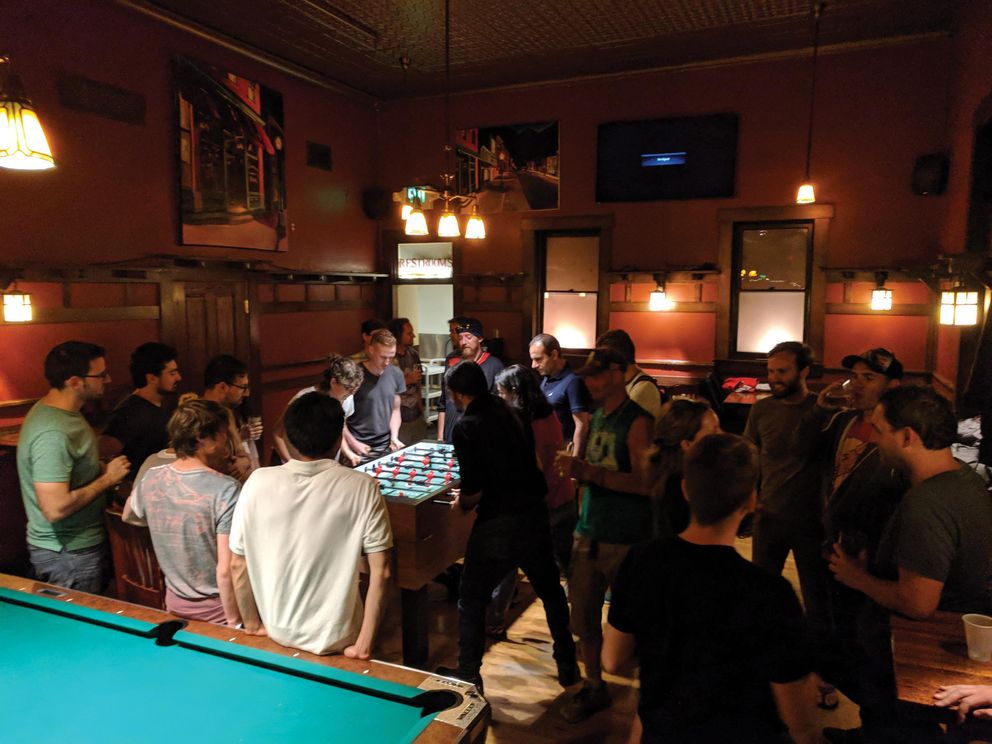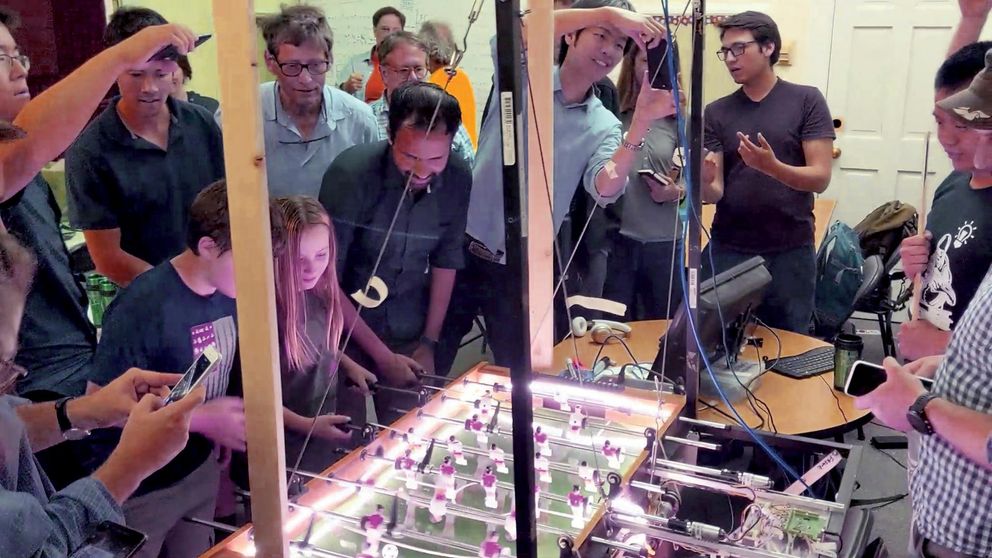Why We Built a Neuromorphic Robot to Play Foosball
For the past 25 years or so, those of us who seek to mimic the brain’s workings in silicon have held an annual workshop in the mountain town of Telluride, Colo. During those summer weeks, you can often find the participants unwinding at the bar of the New Sheridan Hotel on the town’s main street. As far back as most can remember, there has been a foosball table in the bar’s back room. During the weeks of the workshop, you’ll usually find it surrounded by a cluster of neuromorphic engineers engaged in a friendly rivalry that has spanned many years. It was therefore almost a foregone conclusion that someone was going to build a neuromorphic-robot foosball table.
That someone was me.
It turns out there’s more to the idea than simple fun. After all, why do we play competitive games like foosball? We are drawn to them for social reasons, but we also enjoy learning the mechanics and improving our performance. Games are how we boost our hand-eye coordination, tracking and predictive abilities, and strategic thinking. Those are all skills we want robots to have.




